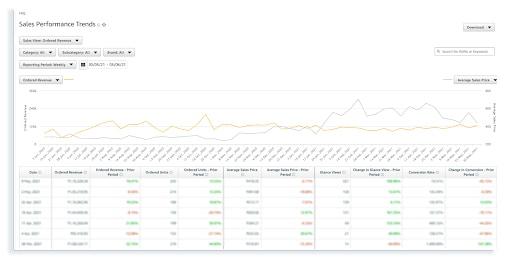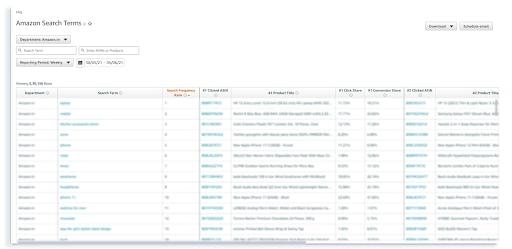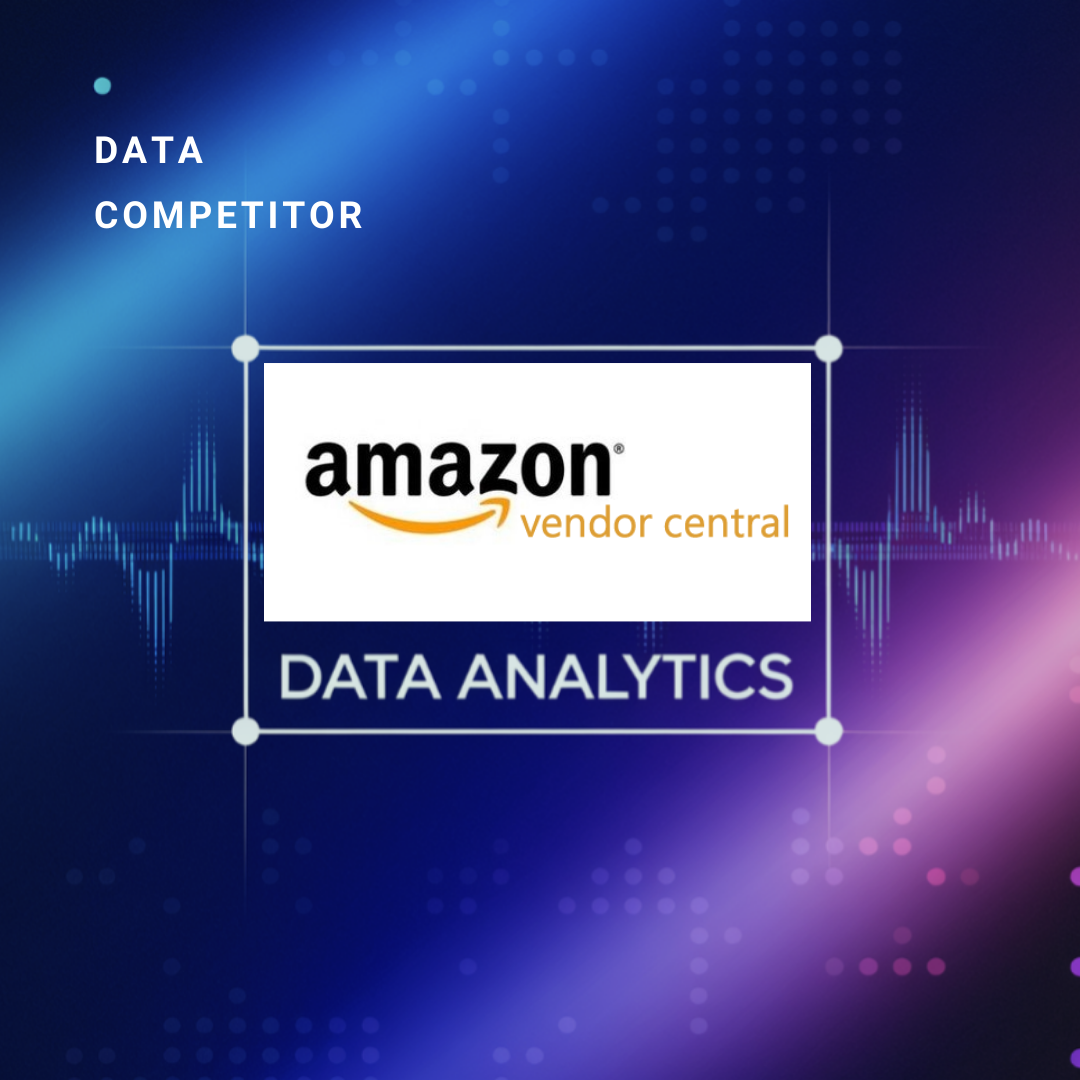Top sellers on Amazon use Amazon Vendor Central data analytics tools to manage their shop operations and track their sales volumes over time. It is an all-in-one hub for vendors to keep on top of their daily activities.
Vendor Central uses big data analytics to help you understand supply chain efficiency, product demand, and marketplace trends. The tools also help you manage and forecast sales. It supports your store with boosted ads and A+ content to enhance its visibility. Does it provide you with the tools you need to grow your store? How does it differ from the general account? Let’s find out.
Amazon Vendor Central Functionality
You can use your Amazon Vendor Central to analyze your data and streamline your daily operations. Here are some of the features you can use in your online store.
- Marketing Reporting Tools: Generate various marketing analytics reports to track sales trends, complementary goods, and customer behavior. These reports are easy for your marketing team to digest.
- Stock Management: Monitor stock levels at any time and forecast demand based on the information from your sales history.
- Traffic Analytics: Analyze organic and inorganic traffic for your product pages and identify ways to boost engagement while reducing abandoned carts.
- Advertising Performance Tracking: Evaluate campaign success with data analysis tools that highlight keyword performance and ad ROI.
- Order Management: Manage purchase orders, cancellations, and returns with ease.
Amazon Vendor Central Data Transfer

A diagram showing integration with other AWS systems.
You can transfer data to and from your seller account. Here are some options for pulling data from your account.
- Integrate with other Amazon systems like SQS, Amazon DynamoDB, and S3 to automatically update sales data, inventory, and order status.
- Import data via spreadsheets or APIs for bulk updates.
On the other hand, if you wish to upload data onto Amazon Vendor Central, you use a template. Here is the procedure for using it.
- Log in to your account with your login details.
- Head to the “Reports” or “Catalog” section
- Download Amazon’s preformatted templates for specific data categories, such as pricing, inventory, or product descriptions.
- Populate the template using Excel or similar software. Fill out fields like ASINs, SKUs, and product descriptions.
- Upload the completed template in CSV or Excel format on the designated section.
Amazon Vendor Central Reporting
Amazon Vendor Central has several reporting tools and offers good options for analytical software users. You can use the following options:
- Customizable Dashboards: Build tailored reports to track KPIs like sales volume, revenue, and product availability. You can have as many dashboards as per the metrics you wish to check.
- Sales Analytics: Determine how your products are performing with granular reports that separate data by region, time frame, and category. This helps organizations keep track of the different segments they are serving.
- Marketing Analysis Reports: Evaluate ad spend effectiveness using marketing analytic tools to optimize future campaigns.
Below are examples of two reports:
A report of search terms.

This other report tracks the sales volumes.

Amazon Vendor Central Customer Support
There are several ways you can help on this platform. There are no premium services for selected customers:
- Help Center: This section has FAQs, dashboards, and guides on several procedures. You can also use this page to learn more about this e-commerce platform
- Email Support: You may email support on issues that require detailed feedback or evidence in the form of attachments
- Vendor tickets: Submit questions through the dashboard and track responses.
- Training materials: Access videos and documentation to understand platform features.
Amazon Vendor Central Price Breakdown
Amazon Vendor Central does not follow a typical subscription pricing model. Instead, costs are based on a percentage of your sales, which Amazon deducts as a vendor allowance. Additional charges may apply for optional services, such as premium features to advertise and analyze trends.
Amazon Vendor Central Free Trial
Amazon specifically selects sellers to take part in the program and invites them to create an account on the platform. There is no free trial when you join. However, once onboarded, you can explore all its features, including traffic analytics and data analysis programs, without upfront costs. Once you find the tools you wish to use, you can then check out the pricing options for each of the services you wish to use.
Amazon Vendor Central Price Packages
This platform uses a vendor agreement model instead of traditional subscription pricing. The highest cost of the service is the vendor allowance percentage, which is deducted from your total sales. This percentage varies depending on the negotiated terms. However, it typically ranges between 5% and 10% of gross sales.
In addition to the vendor allowance, you may pay for other services as explained below:
Advertising Costs: Amazon has several advertising tools, such as Sponsored Products or Sponsored Brands. These tools charge based on pay-per-click (PPC) or other campaign metrics. Despite the costs, you will find these tools invaluable for driving organic traffic to your product pages.
Premium Analytics Services: If you are looking for advanced data analysis programs, you can access optional features, such as detailed demand forecasting and sales velocity analytics, for an additional fee.
Logistics Fees: For sellers using Amazon’s fulfillment services, costs for storage, shipping, and handling apply. These charges depend on the size and volume of your products.
While the lack of transparent subscription tiers can make budgeting challenging, the flexible pricing model ensures that you only pay for the services they actively use. You can always upgrade to more tools as your business grows and remove what you do not need later.
Amazon Vendor Central Customer Reviews
Since sellers join the site by invitation, there are very few user reviews on the quality of service. However, we have noted that queries on several platforms are quickly answered, and the general feel of sellers’ sentiments about the site is positive. Here is a preview of some users on different forums.

The user says Vendor Central (VC) has better conversion rates than Seller Central (SC). This statement is true as Amazon offers better tools to enhance sales volumes.

This user states the main advantages of the system. It has better margins and predictable payment schedules. There are no issues like unlimited returns and having to match prices with selling that are selling goods at lower prices.
Amazon Vendor Central Pros and Cons
| Pros | Cons |
| It provides you with various features so that you can track sales, buying behavior, and website traffic. | The vendor allowance percentage and additional fees can be significant. |
| You benefit from features to help track your product levels as well as process orders and their fulfillment process. | Amazon often determines the retail price of products, which can conflict with your own pricing. |
| You receive better support and access to exclusive marketing tools not available to third-party sellers. | The setup and data transfer process can be challenging. |
| Sellers in the site can use separate features like A+ Content and Sponsored Brands to boost brand visibility, which are unable to general sellers. | Vendors must adhere to Amazon’s rigorous standards for packaging, product descriptions, and delivery timeline. |
Verdict
Amazon Vendor Central is a versatile tool for any vendor wishing to use Amazon’s algorithm to enhance their sales. This premium vendor management platform offers you a combination of sales management and analytic tools with accurate inventory management data. Amazon offers premium support and tools to boost your brand visibility.
Unfortunately, this is an invite-only platform, and only Amazon determines if a vendor has qualified. If you are lucky enough to be selected, you will find that it is one of the best marketing analytic tools on any e-commerce site and can integrate with other software services, including Amazon Advertising, Marketplace Web Services, and AWS.





Leave a Reply